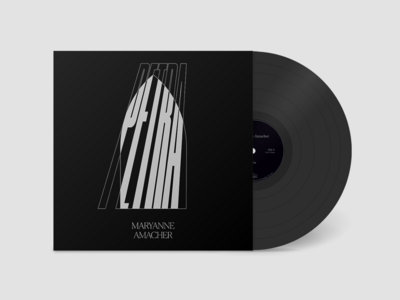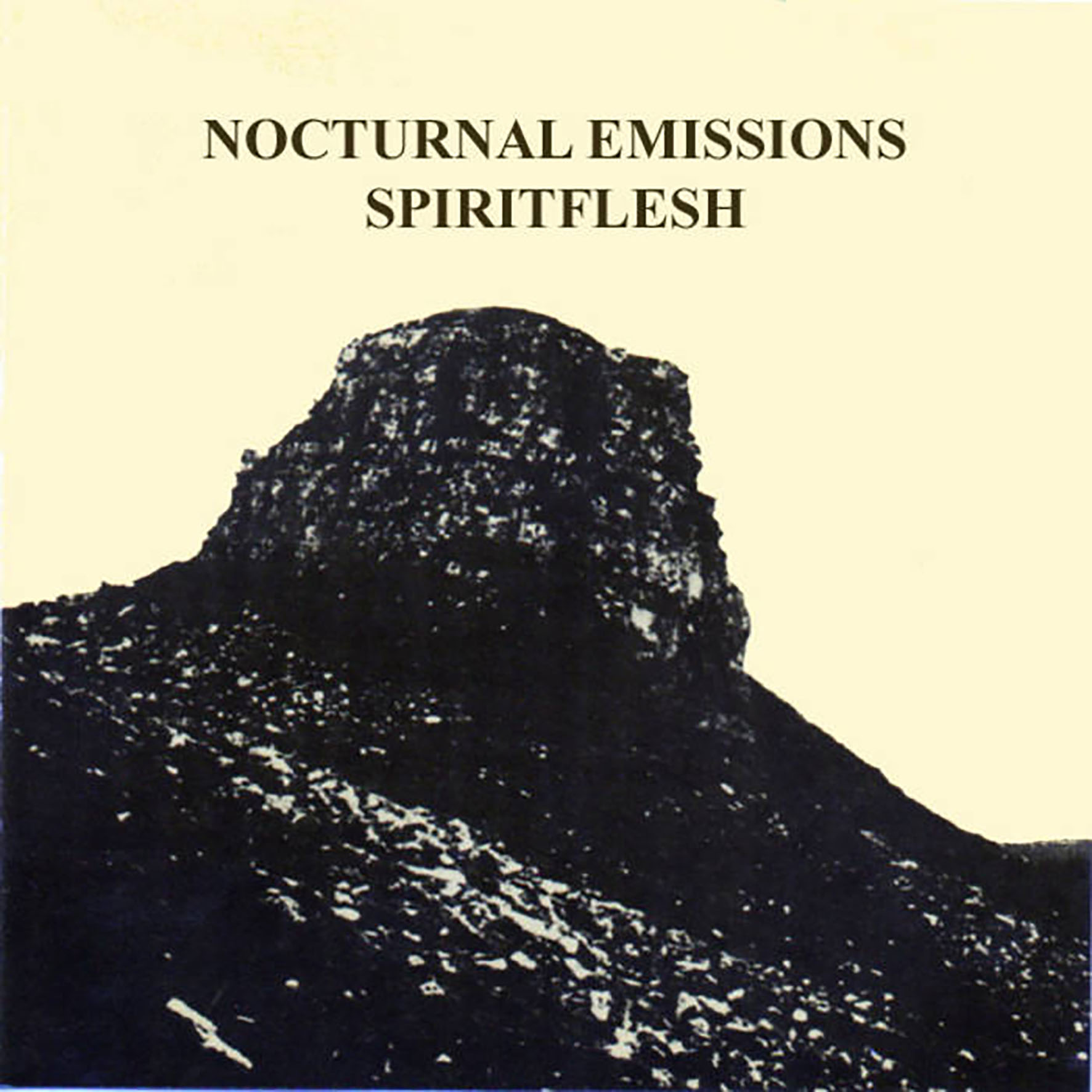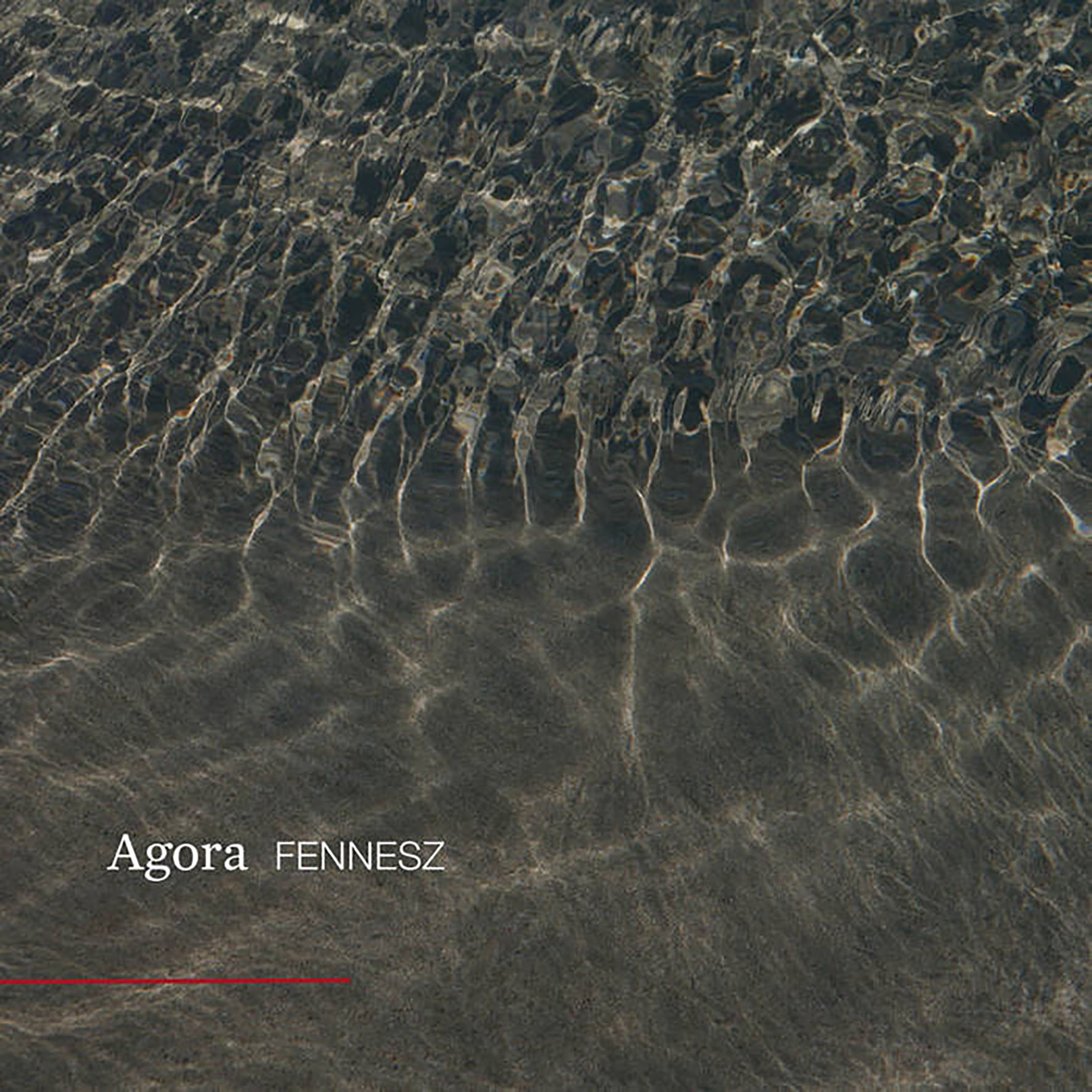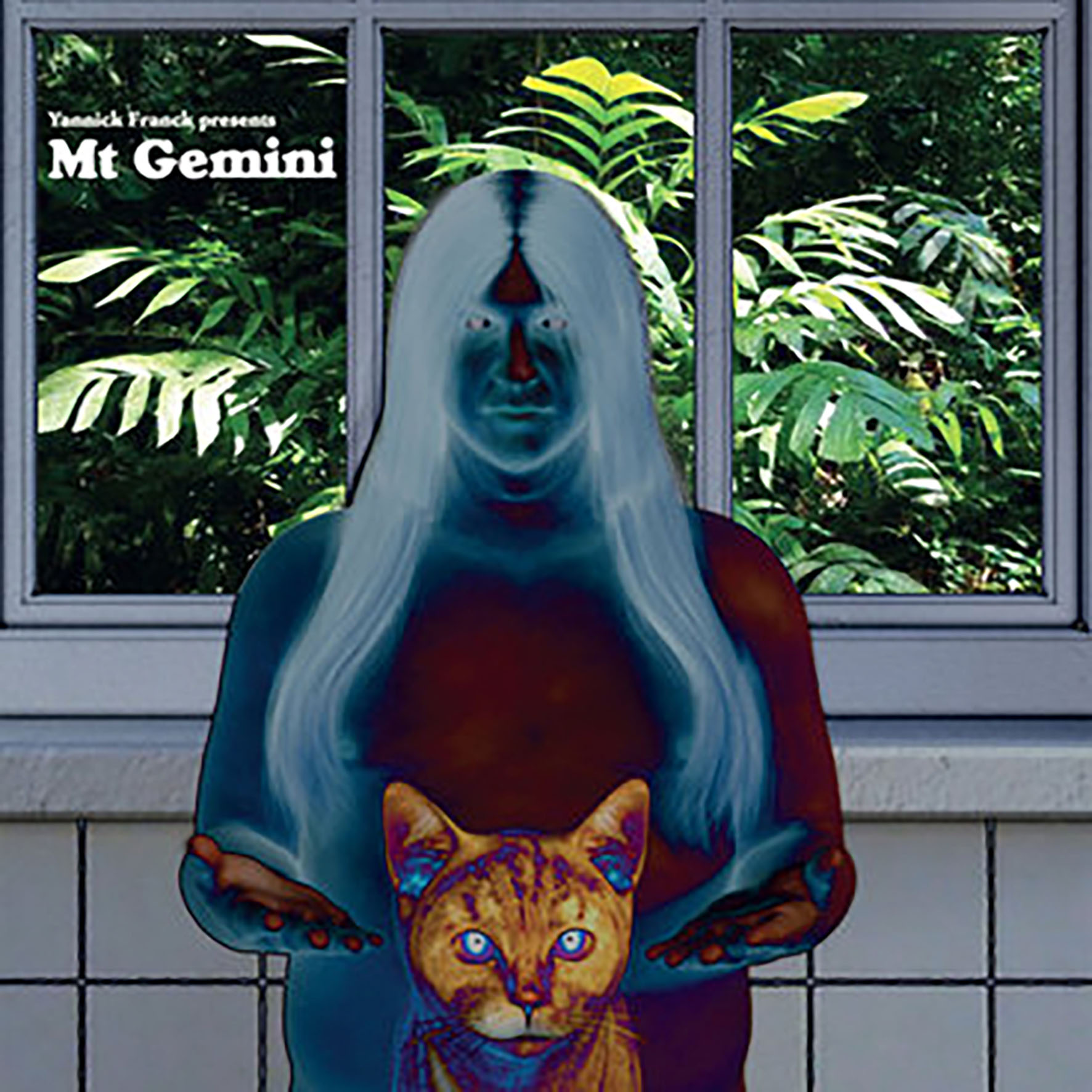- Administrator
- Albums and Singles

Maryanne Amacher (1938 - 2009) was a composer of large-scale fixed-duration sound installations and a highly original thinker in the areas of perception, sound spatialization, creative intelligence, and aural architecture. She is frequently cited as a pioneer of what has come to be called "sound art," although her thought and creative practice consistently challenge key assumptions about the capacities and limitations of the genre. Amacher's work anticipates some of the most important developments in network culture, media arts, acoustic ecology, and sound studies, yet due to its expansive interdisciplinary nature it has rarely been documented. Following two CDs for Tzadik and her inclusion in the monumental collection OHM: The Early Gurus Of Electronic Music (1948-1980), this publication of Amacher’s 1991 piece "Petra" marks her first commercially available instrumental work.
"Petra" was originally commissioned for the ISCM World Music Days in Switzerland. Written for two pianos, the piece is a unique example of Amacher's late work, a direct extension of her working methodologies for electronic composition taken into an acoustic realm that alludes to the music of Giacinto Scelsi and Galina Ustvolskaya. "Petra" is a sweeping, durational work based on both Amacher's impressions of the church in Boswil where the piece was premiered and science-fiction writer Greg Bear's short story of the same name, in which gargoyles come to life and breed with humans in a post-apocalyptic Notre Dame.
This solemn interpretation of "Petra" was recorded at its 2017 American premiere at New York's St. Peter's Episcopal Church with pianists Marianne Schroeder, who originally performed the piece alongside Amacher in 1991, and Stefan Tcherepnin, who performed it alongside Schroeder in 2012 at Hamburger Bahnhof, Berlin. Weighing tranquilizing passages of glacially-paced serenity against stretches of dilapidated, jagged dissonance, the recording illuminates a crucial node in the constellation of Amacher's enigmatic oeuvre.
Artistic director of the Giacinto Scelsi Festival in Basel, Marianne Schroeder is a Swiss composer and pianist specializing in the interpretation of New Music. She has collaborated with and premiered work by John Cage, Karlheinz Stockhausen, Dieter Schnebel, Anthony Braxton, Morton Feldman, Pauline Oliveros and Giacinto Scelsi, with whom she studied. She is currently a professor at Hochschule der Künste Bern, and has also taught at the International Summer Courses in Darmstadt.
Stefan Tcherepnin is an American electronic music performer, contemporary artist, and composer in fourth generation, continuing the family heritage of his great-grandfather Nicholas, grandfather Alexander, and father Ivan Tcherepnin. As a family friend of Amacher's and a student of hers at Bard College he is uniquely qualified to navigate the labyrinth of Amacher interpretation.
More information can be found here.
Read More
- Administrator
- Albums and Singles
 There is an ancient Indian parable about a group of blind men trying to describe an elephant–predictably, they all wind up with very different impressions of what an elephant is like, as they are each only experiencing one small part of something very large (tusk, a snout, a foot, etc.). I mention this because I feel like I am in a very similar situation whenever I try to wrap my head around Nigel Ayers' idiosyncratic and sometimes visionary career: I have roughly ten Nocturnal Emissions albums and feel like I have barely scratched the surface of his many curious and fascinating activities over the years (both musical and otherwise). Despite that intimidatingly vast ouevre, there are a handful of universally acknowledged landmark albums within his sprawling discography and Spiritflesh (recently reissued) is one of them. In fact, it is arguably the best of lot (depending on who you ask, of course). For better or worse, it is well-known for its influential role in shaping the dark ambient genre, but it is far more earthy, vibrant, and willfully experimental than any of the gloomy drones that followed in its wake and too unique to have many true kindred spirits. More than thirty years after its release, Spiritflesh's visionary collage of traditional instrumentation and field recording still sounds remarkably fresh and timeless.
There is an ancient Indian parable about a group of blind men trying to describe an elephant–predictably, they all wind up with very different impressions of what an elephant is like, as they are each only experiencing one small part of something very large (tusk, a snout, a foot, etc.). I mention this because I feel like I am in a very similar situation whenever I try to wrap my head around Nigel Ayers' idiosyncratic and sometimes visionary career: I have roughly ten Nocturnal Emissions albums and feel like I have barely scratched the surface of his many curious and fascinating activities over the years (both musical and otherwise). Despite that intimidatingly vast ouevre, there are a handful of universally acknowledged landmark albums within his sprawling discography and Spiritflesh (recently reissued) is one of them. In fact, it is arguably the best of lot (depending on who you ask, of course). For better or worse, it is well-known for its influential role in shaping the dark ambient genre, but it is far more earthy, vibrant, and willfully experimental than any of the gloomy drones that followed in its wake and too unique to have many true kindred spirits. More than thirty years after its release, Spiritflesh's visionary collage of traditional instrumentation and field recording still sounds remarkably fresh and timeless.
Mannequin/Soleilmoon/Earthly Delights
I generally believe that if an album is legitimately great, it can be enjoyed without knowing anything at all about its background or original context, as time has a way of unavoidably eroding and blurring both the cultural nuances of an era and the artist's original intentions.However, knowing a bit about an album’s origins can certainly unveil additional layers to appreciate, as Spiritflesh was a considerably more radical statement than just a classic ambient album (which it can easily be mistaken for these days, as its striking singularity has been blunted by everything that came after it).For example, prior to Ayers' late-'80s immersion in increasingly primitivist and ritualistic themes, Nocturnal Emissions had a lengthy run of beloved noise and skewed synth pop albums.The transition into Spiritflesh territory was not a completely abrupt one though, as Ayers and Caroline K had already started to blur the lines between the two worlds quite a bit with 1987's The World is My Womb, which incorporated both bird songs and processed recordings of Indonesian gamelan performances.With Spiritflesh, however, the break with electronics and technology was complete and definitive, as Ayers limited his instrumental palette to just harmonium, chimes, and a music box.Moreover, those instruments are mostly relegated to just background drones and coloration, as the foreground of these ten pieces is almost always devoted to field recordings of the natural world.It is also worth noting that Spiritflesh was recorded during the ascension of acid house, which means that Ayers was wandering around the London Zoological Gardens and Derbyshire Dales with a microphone while many of his post-industrial peers were flocking to clubs and embracing dance music.Very iconoclastic move (and it aged well too).
Unlike the work of Richard Skelton, however, Spiritflesh does not seem to be inspired by a deep love for any specific place, as Ayers had no problem incorporating non-purist elements like windshield wipers, African birds, or chimps.Instead, he seemed focused on creating his own place altogether, evoking a timeless vision of rural England that lies somewhere between the pastoral and a hallucinatory dreamstate.While Ayers was pointedly anti-technological in his choice of source material, that constraint did not apply to the production side of the equation, as the various sounds were collaged, looped, and processed into a variation of reality that feels ancient, shimmering, and unfamiliar.The predominant compositional aesthetic here is definitely the tape loop/"locked groove" school of alternately obsessive and hypnotic repetition, which certainly contributes to that effect.For a number of pieces, such as "Cloud Can" and "Ape Chimes," Spiritflesh is ambient in the true sense of the word, as Ayers weaves a surreal and absorbing environment of warm minimal drones, bird song, blurred wind chimes, and a discreet host of other sounds that endlessly loops and overlaps in pleasantly disorienting fashion.In a few cases, the distance between Ayers' vision and present reality is a bit more striking though.For example, the hiss-soaked "Ch'i Sea" sounds like the gentle churning and lapping of a subterranean lake in a hidden grotto, while the rumbling percussion of "Boneshaker" feels like a field recording of an exotic tribal procession (an ethnological forgery that would have pleased Can, no doubt)."Raindance," on the other hand, would have probably delighted a young Rashad Becker, as it sounds plucked from a darkly lysergic imaginary jungle.
Curiously, Ayers only stretches into more conventionally structured and melodic fare once, with the gorgeously haunting and otherworldly "Acres of Gold," making that piece the album's undeniable centerpiece.Part of me wishes he had been similarly ambitious with some other pieces as well, but that one glimpse of sublime brilliance admittedly provides a very effective and alluring gateway to the more nuanced pleasures of the rest of the album.Speaking of nuance, I would be remiss if I did not also mention that Spiritflesh is a masterfully uncluttered and understated album from start to finish, displaying a lightness of touch that was very much in opposition of the pervading '80s cultural zeitgeist.In fact, absolutely everything about Spiritflesh makes me think that Ayers looked at the world around him and empathically said "no thanks," then set about creating a better one.And while Spiritflesh is admittedly just an album, I do think Ayers succeeded in that grand, quixotic objective, as he essentially created a modest and makeshift portal into an immersive world of mystery and beauty where normal temporal and dimensional boundaries are considerably more porous (and there are no cars or nearby people).As such, Spiritflesh's place in the ambient canon is a well-deserved one, but I think it deserves at least an honorable mention as a significant work of 20th century avant-garde composition as well, offering an inventively naturalistic inversion of the musique concrète aesthetic.
Samples can be found here.
Read More
- Administrator
- Albums and Singles
 It has been roughly five years since Christian Fennesz last surfaced with a proper solo album (2014’s excellent Bécs), though he has certainly kept busy with other projects in the meantime. For this latest release, however, he found himself in unusual straits, as he lost his studio space and had to move all of his gear into his bedroom. In theory, that was not an optimal work environment and he never ended up setting up much of his usual arsenal, but new constraints can often lead to unexpected breakthroughs. That is arguably the case here: while Agora is not quite an Endless Summer-caliber bombshell or a groundbreaking reinvention of Fennesz's aesthetic, it is definitely a modest masterpiece of sorts, as quietly recording in his room with minimal gear and omnipresent headphones paved the way for a quartet of truly lovely, nuanced, and absorbing soundscapes.
It has been roughly five years since Christian Fennesz last surfaced with a proper solo album (2014’s excellent Bécs), though he has certainly kept busy with other projects in the meantime. For this latest release, however, he found himself in unusual straits, as he lost his studio space and had to move all of his gear into his bedroom. In theory, that was not an optimal work environment and he never ended up setting up much of his usual arsenal, but new constraints can often lead to unexpected breakthroughs. That is arguably the case here: while Agora is not quite an Endless Summer-caliber bombshell or a groundbreaking reinvention of Fennesz's aesthetic, it is definitely a modest masterpiece of sorts, as quietly recording in his room with minimal gear and omnipresent headphones paved the way for a quartet of truly lovely, nuanced, and absorbing soundscapes.
I wish there was a way to say this that does not sound like an ambiguously back-handed compliment, but it feels like Fennesz devoted an unusual amount of time and focused attention to this album.On previous masterpieces like Endless Summer and Venice, he had a strong, coherent vision and shaped variations upon each theme into an immersive and thoughtfully sequenced arc.Needless to say, that approach worked extremely well, so there was no real need to change it anytime soon, yet Agora takes quite a different shape than its illustrious predecessors.In fact, it almost feels like four self-contained mini-EPs: they certainly all feel like they belong together and complement one another beautifully, but each seems like it could have easily been the kernel of its own distinct album instead.While I suspect at least three of those hypothetical albums would have been absolutely wonderful, I do not have any nagging sense of missed opportunity with Agora, as each of these pieces (all clocking in just over ten minutes) feels like a perfect distillation rather than a tantalizing glimpse that begs to be expanded upon.In particular, the album's two bookends stand as particularly striking examples of Agora's divergent stylistic threads.Of those two poles, it is the aptly titled opener ("In My Room") that best represents the beating heart at the core of the larger song suite.
There is almost an actual beating heart in the piece as well, as a subterranean throb slowly pulses beneath its warmly hissing and undulating reverie of dense, buzzing drones.While those slow-moving sustained tones are certainly the raw material, it would be a stretch to call "In My Room" a drone piece, as it feels more like a landscape of gently shifting tectonic plates bathed in the light of an ascending sunrise: subtly amassing streaks of warmth and color quietly start to eclipse the underlying drones as the piece inexorably moves towards a gorgeous crescendo.The two pieces that follow stick to roughly the same aesthetic of quietly lovely ambient drone that ultimately blossoms into something more structured and powerful, though "Agora" does not pull off that feat quite as well as its neighbors (primarily because it starts from a colder, more formless place).The title piece is still quite likable in its own right though, as its floating, slow-moving clouds of blurred and hiss-soaked chords are blissfully meditative–it just has the misfortune of being surrounded by three slow-burning epics of focused intensity.
In "Rainfall," for example, Fennesz revisits the languorous drones of "In My Room" with unexpectedly vivid and visceral heft, launching an oft-brilliant and churning assault of shuddering, sizzling chords and cascading, overlapping motifs.It is essentially classic Fennesz writ large and it is absolutely wonderful.The closing "We Trigger the Sun," on the other hand, is almost entirely unrecognizable as a Fennesz piece at first, resembling the sort of deep space '70s synth music that would be perfectly at home in a cinematic mindfuck like Mandy.Gradually, however, the heavy cosmic vibes dissolve a bit to make room for more traditional Fennesz-esque touches like washes of hazy guitar chords.It is quite a wonderful convergence of unlikely threads, resembling something like a blurred, stretched, and deconstructed Popul Vuh without sacrificing any of the grandeur.
While I sincerely doubt anyone needs to be reminded of it, Agora beautifully reaffirms why Christian Fennesz remains one of the most vital and compelling figures in experimental music: his more challenging impulses and his formidable production genius are always grounded in a strong melodic sensibility.In an abstract way, he is a legitimately fine songwriter, despite the conspicuous lack of anything resembling conventional structures, hooks, melodies, or vocals (though the latter does exist in obscured form on a pair of pieces).As such, Agora would probably be an enjoyable album even if Fennesz were not a textural sorcerer and arch-deconstructionist.Happily, however, he is both of those things and he makes full use of those powers to transform the tender, fragile beauty of his central motifs into dazzling vistas of ragged, sizzling, and artfully corroded heaven.It is certainly fair to say that Agora continues Fennesz's lengthy hot streak and is yet another great album from a master, but that actually undersells the true scope of his achievements a bit.Fennesz has not just made a string of excellent solo albums–he has managed to do so while continually reinventing himself and making each fresh release feel like a legitimate event that opens up fresh territory for others to explore in its wake.
Samples can be found here.
Read More
- Administrator
- Albums and Singles
 Jamaican-style dub music has been around for more than half a century at this point, yet new artists continue to emerge who miraculously find new ways to twist and evolve upon the form. The latest example of that phenomenon comes in the shape of this new project from Orphan Swords' Yannick Franck, who ingeniously carves up vintage ska, rocksteady, and skinhead reggae to yield a suite of wonderfully soulful and hallucinatory collages. In some ways, The Caretaker is perversely the closest kindred spirit here, as Franck is a similarly "outsider" deconstructionist: he does not have a treasure trove of master tapes from legendary Kingston studios that would enable him to easily isolate a bassline or vocal melody, yet he inventively turns that disadvantage into an asset. In transforming whole cloth recordings into something of his own, Franck has created something that bears almost zero structural similarity to traditional dub or reggae, but manages to translate its core essence into challenging and playfully experimental abstract art. When he hits the mark just right, the results can be quite brilliant.
Jamaican-style dub music has been around for more than half a century at this point, yet new artists continue to emerge who miraculously find new ways to twist and evolve upon the form. The latest example of that phenomenon comes in the shape of this new project from Orphan Swords' Yannick Franck, who ingeniously carves up vintage ska, rocksteady, and skinhead reggae to yield a suite of wonderfully soulful and hallucinatory collages. In some ways, The Caretaker is perversely the closest kindred spirit here, as Franck is a similarly "outsider" deconstructionist: he does not have a treasure trove of master tapes from legendary Kingston studios that would enable him to easily isolate a bassline or vocal melody, yet he inventively turns that disadvantage into an asset. In transforming whole cloth recordings into something of his own, Franck has created something that bears almost zero structural similarity to traditional dub or reggae, but manages to translate its core essence into challenging and playfully experimental abstract art. When he hits the mark just right, the results can be quite brilliant.
I have been listening to this album in fairly heavy rotation for about a week now and I have been wracking my brain for an apt and succinct way to summarize Franck's aesthetic with Mt. Gemini. Plenty of great words and phrases like "weirdly sensuous," "phantasmagoric," "obsessive," and "noirish" have certainly been fluttering around my head, but I ultimately came up empty-handed.There is a strong likelihood that my mind has finally grown weary of me and wishes I would focus my attention on my actual life, yet that is not the whole story, as these five songs are a deliciously shapeshifting and elusive fun house of surreal transfigurations that defy any general description.There is certainly a consistent thread of smoky, twilit unreality that runs through the album, yet its collision with the bright, melodic hooks of vintage Jamaican dancefloor grooves leads down some very eclectic and divergent paths (with varying degrees of success, of course).The most striking and immediately gratifying manifestations of Franck's bold vision happen right out of the gate with "Copy Cat" and "What Can I Do?".
In the former, a lazily shuffling groove appears and obsessively repeats like a woozy slow dance in a state of suspended animation.Soon, however, a much catchier and more upbeat sample barrels right through it and the piece blossoms into a swirling, delirious maelstrom of warped textures, tape hiss, and heady drones.It kind of feels like a classic rocksteady hit being sucked into a black hole and being ripped completely apart except for its tenaciously repeating chorus.My favorite piece, however, is the far simpler "What Can I Do?".The piece starts off as kind of a spectral, shadowy cousin to the heady dub excursions of Moritz von Oswalt's Rhythm & Sound project, approximating an incredibly worn cassette of slow, heavy reggae in which the "industrial" sounds of the struggling tape machine almost overpower the music.Gradually, however, a different groove starts to fade in that is every bit as corroded as the first, yet blossoms into a lumbering, blown-out juggernaut of hiss-ravaged rhythm.Throughout it all, an irrepressible falsetto whoop faintly loops over and over as a lingering vestige of human warmth at the core of something far closer to mechanized horror than reggae.
The next two pieces make even that extremely tenuous link to the original material seem like quite a lot, plunging deep into a rabbit hole of demented abstraction.For example, "Chicken Merry" sounds like a hallucinatory and obsessive loop of barnyard sounds being slowly engulfed in infernal, subterranean groans and throbs.A flickering semblance of a song eventually does emerge, but the surrounding music is too deranged for it to even matter at that point (though it is admittedly a nice bit of compositional sleight of hand).Elsewhere, "Just Like A River" sounds like a wobbly, ruined tape of massive, clanking machinery fed through a wah-wah pedal.The endearingly weird closer ("Long Shot Kick the Bucket"), however, unexpectedly returns to more human territory to end the album on a perversely radiant, dreamlike note, unfolding as a hypnotically looping and overlapping horn motif that fades in and out of focus.In its final moments, a sleepily warm bass line even takes shape to end the album with something that approaches genuine soul and beauty.
Notably, I think there are probably only twenty minutes of legitimately great music on this album, yet I am reluctant to describe it as flawed or uneven, as I am fundamentally delighted by Franck's vision and fascinated by his execution.Every single one of the pieces is a striking example of transformational wizardly, going beyond mere deconstruction to create something deeply lysergic that is light years away from the raw material that it was birthed from.Moreover, Franck is consistently inventive in his alchemy, studiously avoiding the temptation to repeat the same tricks or head in a direction that has already been explored: each piece is treated like a completely unique foundation for a new vision to organically grow from.It perversely reminds me of the hackneyed joke about Michelangelo sculpting David ("Oh, it was easy–all I did was chip away everything that didn't look like David.").Though it is intended as humor, there is a weirdly viable thought process at the heart if it and it feels like Franck exploited it here: I am sure making Just Like A River was not easy at all, but it does seem like he isolated pieces and fragments that fascinated him and allowed their individual traits to guide their ultimate journey to a significant degree.As far as music as entertainment is concerned, that strategy does not always lead to an optimal place, but it certainly proves to be fertile ground for challenging and occasionally revelatory sound art in the case of Just Like A River.
Samples can be found here.
Read More
- Administrator
- Albums and Singles

Michael Morley has long been acclaimed for his electric guitar and electronic forays in New Zealand’s legendary The Dead C and Gate. On Heavens Idleness Awaits, he strips his music to its most elemental state. Recorded at home and using only a single tracked 12-string acoustic guitar, Morley creates an intimate and intensely meditative work. Over four side-long tracks, he weaves hypnotic melodic figures that slowly unfurl to reveal a minimalist masterwork and one of his most powerful statements to date.
More information can be found here.
Read More
- Administrator
- Albums and Singles

A 105-minute smoky tinted imprinted professionally duplicated cassette tape, housed in a clear case with full-color artwork printed on shimmer paper. Art by Grant Evans and inspired by Sarah Colombo's debut novel Subterranean. Also available in digital format.
"... struck by the despair of objects."
More information can be found here.
Read More
- Administrator
- Albums and Singles

Today, we're glad to present our last winter's release by øjeRum who comes back for the second time on eilean rec. with Nattesne (eilean 85).
øjeRum is Copenhagen-based musician and collage artist Paw Grabowski. Since 2014 he has put out releases on various labels such as A Giant Fern, Cabin Floor Esoterica, eilean rec., Phinery, Scissor Tail Editions, and Vaald.
øjeRum is all about the attempt to capture and convey emotions, moods and memories.
More information can be found here and here.
Read More
- Administrator
- Albums and Singles
 As the latest installment in his Songbook series, Mattin continues building from the concepts of those that came before, namely recording in a live setting with a variety of collaborators. This time the set was recorded at the Digging the Global South Festival in 2017 and is quite a politically charged recording, with Mattin drawing from two events early in the 20th century and what he sees as the parallels to the current resurgence of fascism in Europe (and by extension the rest of the world). Sprawling and challenging, the final product is anything but impenetrable though, and Mattin does a perfect job presenting the concept without ever sacrificing the music.
As the latest installment in his Songbook series, Mattin continues building from the concepts of those that came before, namely recording in a live setting with a variety of collaborators. This time the set was recorded at the Digging the Global South Festival in 2017 and is quite a politically charged recording, with Mattin drawing from two events early in the 20th century and what he sees as the parallels to the current resurgence of fascism in Europe (and by extension the rest of the world). Sprawling and challenging, the final product is anything but impenetrable though, and Mattin does a perfect job presenting the concept without ever sacrificing the music.
During my first listen to Songbook #7, which was done intentionally without consulting liner notes or any other textual information, I was rather taken aback by the applause at the end.As a whole, the album sounds far too controlled and structured to have been a live piece.This does not mean that it is an overly restrained record, however.There is plenty of chaos and noise to go around, but it was the abrupt stylistic shifts from piece to piece (and even within each section) that came across as almost too drastic or dramatics to be in a live setting.
Songbook #7 is broken into seven pieces, the first six of which are right around seven minutes long (see a pattern?).Mattin constructed the performance based around the first seven months of 1917 in revolutionary Russia, and the anarchist Germaine Berton, who murdered the leader of the far right French Action League in 1923.Drawing parallels to the world a century later, he recontextualizes these events; one at the macro-societal level and one at the individual, into a similar set of present day conditions that, thus far, have not been associated with a similarly drastic response.
His spoken word narration opening each section (titled for a month in 1917, January to July) ties the pieces together, but each stands alone as well capturing different styles fitting Mattin's intent with the record as a whole.Mattin's harsher noise background is the most prominent to be heard, from the wall of digital noise that opens "January," the engulfing layers of static on "April," and swirling passages in "May."The layers of electronic sound, provided by Moor Mother and Farahnaz Hatam, augmented by sampler work from Lucio Capece, Marcel Dickhage, and Cathleen Schuster, vary dramatically throughout, keeping a strong since of variety amidst the chaos here.
There are less synthetic moments here as well:Capece's clarinet outbursts on "February" and the deconstructed jazz rhythms by Colin Hacklander on "March" make for some organic signposts in an otherwise electronic swamp.Hacklander's drumming also gives propulsion to the thrash punk tinged parts of "February" and the sustained noise of "April" as well.Besides that the use of spoken word throughout also gives a bit of humanity within the swirling electronic storm.Mattin, Dickhage, and Schuster all provide text, and "June" sticks out as a meta-exploration of the album’s themes via direct conversation about the topic as it is ongoing.
Mattin's texts may make the underline themes clear throughout Songbook #7, but it is the structure and dynamics of the record that solidify this most.Aimed as a pointed critique of how various anti-fascist movements are attempting to accomplish their goals, the sprawling chaos of the sound, jerking and jumping from one sound to another, encapsulates this lack of focus perfectly.The more conventional sounding punk outbursts on "February" and "July" that feature Mattin's shouting vocal work come across as intentionally ineffectual:he is obviously angry, but the actuality comes across as him practically screaming at a wall.These two elements capture that critique of political efforts well:there is rage and good intentions throughout, but they are unfocused and therefore unable to accomplish much, especially when compared to the Russian revolution and Germaine Berton’s actions over a hundred years ago.The final product is as ugly as the political climate Mattin is critiquing, but in the best and most fascinating manner.
Read More
- Administrator
- Albums and Singles
 This quartet is the culmination of Glen Steenkiste’s long fascination with the harmonium, expanding beautifully upon the themes laid out by Helvette's sprawling Droomharmonium (2018). That said, this album feels like a bit of a different animal altogether, as this league of Belgian drone artists takes the kernel of Steenkiste's vision to a considerably transformed place. In fact, Het Interstedelijk Harmoniumverbond feels like an inspired continuation of the grand tradition of La Monte Young-style minimalism, weaving complexly harmonic and gorgeously undulating dronescapes that favorably call to mind masterpieces like The Electric Harpsichord.
This quartet is the culmination of Glen Steenkiste’s long fascination with the harmonium, expanding beautifully upon the themes laid out by Helvette's sprawling Droomharmonium (2018). That said, this album feels like a bit of a different animal altogether, as this league of Belgian drone artists takes the kernel of Steenkiste's vision to a considerably transformed place. In fact, Het Interstedelijk Harmoniumverbond feels like an inspired continuation of the grand tradition of La Monte Young-style minimalism, weaving complexly harmonic and gorgeously undulating dronescapes that favorably call to mind masterpieces like The Electric Harpsichord.
The earliest origins of Steenkiste's long love affair with the harmonium remain unknown to me, but it was the band Pelt that first opened his eyes to the possibilities of making it the foundation for his own work.It was more of a slowly gestating philosophical evolution than a radical, immediate transformation, however.Though Steenkiste had played similar instruments before, it was not until he was touring through England in 2010 (as part of Sylvester Anfang II) that he finally got to spend time with the real deal.It is quite fitting that it was an Anfang tour that ultimately (if indirectly) lit the fuse for this endeavor, as it seems like nearly every experimental musician in Belgium has done time in one of Anfang's incarnations.In the case of the Harmoniumverbond, Steenkiste shares that history with Steve Marreyt (Edgar Wappenhalter), though I am delighted to report that they were also both involved with something called Chainsaw Gutsfuck.The quartet is rounded out by David Edren, who previously collaborated with Steenkiste in Brahmen Raag, as well as Brecht Ameel of Razen.All four artists live in different cities, so it was not until Steenkiste was approached by Kraak about creating an ensemble for the Eastern Daze festival in 2017 that a project of this scope became a viable possibility.Prior to that, Steenkiste had experimented quite a bit with multitracking himself to achieve a similar effect, but the fixed nature of that approach fundamentally undercut the organic, flowing vision that he was trying to achieve.
The album is divided into two side-long pieces, "Balg" (Bellows) and "Reit" (Reeds).In a general sense, the two pieces are quite similar, as each is essentially a single rich chord that endlessly waxes, wanes, and subtly transforms over the course of roughly twenty minutes.The two pieces have somewhat divergent trajectories though, as "Balg" opens with a dense, dissonant chord teeming with murky, ugly harmonies, while "Riet" opens with a single, quavering tone and steadily builds from there.The starting point is almost irrelevant, however, as it is the blossoming and gently hallucinatory evolution of each piece that is the real show: pulses and oscillations cohere, clouds of overtones swirl, shades of darkness and light flicker and vanish, and new chord shapes endlessly converge and dissipate.If I had to choose, "Balg" is probably the stronger of the two pieces, as it achieves a kind of majestic, transcendent heaviness right from the start, seamlessly blurring the lines between immersive, hypnotic reverie and a menacingly shivering and shimming haze of uneasy harmonies."Reit," on the other hand, is more of a slow-burning affair, gradually amassing density and complex harmonies as it quietly moves towards a quivering and elegiac crescendo.Both pieces are wonderful and unfold in a very satisfying and absorbing dynamic arc.
It is not exactly fair to compare this album to Droomharmonium, as the latter was a solo release and Het Interstedelijk Harmoniumverbond is very much a collaborative endeavor, but it does feel like Steenkiste's vision became much more focused over the last couple of years.However, it is equally possible that his vision did not change at all and he merely benefited greatly from recording in an actual studio and having three other artists to help shape these pieces into their optimal forms.I would be curious to know if these pieces were performed completely "live" and how much overdubbing or editing might have taken place, as Steenkiste took quite a purist approach when he was on his own.This album feels considerably more edited and is the better for it.Rather than suffering from "too many cooks" syndrome, Het Interstedelijk Harmoniumverbond have chiseled that vision to taut, uncluttered, and fluidly unfolding perfection.While it might be a stretch to call these drone pieces "compositions," these loosely structured channelings feel thoughtfully condensed and distilled, unhurriedly yet ceaselessly moving forward at all times and never wasting a single note or lapsing into stasis.Moreover, the spell this album casts is a beautifully timeless one, deftly dissolving the delineations that separate the medieval, the ritualistic, and the contemporary experimental music scene. Het Interstedelijk Harmoniumverbond is the rarest of jewels: a four-way collaboration that can easily stand with any of the individual artists' strongest work.
Samples can be found here.
Read More
- Administrator
- Albums and Singles

Pale Bloom finds Sarah Davachi coming full circle. After abandoning the piano studies of her youth for a series of albums utilizing everything from pipe and reed organs to analog synthesizers, this prolific Los Angeles-based composer returns to her first instrument for a radiant work of quiet minimalism and poetic rumination.
Recorded at Berkeley, California's famed Fantasy Studios, Pale Bloom is comprised of two delicately-arranged sides. The first – a three-part suite where Davachi's piano acts as conjurer, beckoning Hammond organ and stirring countertenor into a patiently unfolding congress – recalls Eduard Artemiev's majestic soundtrack for Andrei Tarkovsky's Solaris. "Perfumes I-III" employs the harmonically rich music of Bach as a springboard for abstract, solemn pieces that sound as haunted as they are dreamlike.
While the first half of Pale Bloom showcases Davachi's latent Romanticism, the sidelong "If It Pleased Me To Appear To You Wrapped In This Drapery" reveals the Mills College graduate's affinity for the work of avant-garde composers La Monte Young and Eliane Radigue. Softly vibrating strings rise and fall like complementary exhalations of breath. As the fluctuating pitches create overtones that pitter and pulse, the piece slowly and subtly evolves – suggesting a well-tempered stillness, yet without stasis.
More information can be found here.
Read More
- Administrator
- Albums and Singles

A deconstruction of Ska, Rocksteady and Skinhead Reggae from the '50s, '60s and '70s. Rather a passionate deconstruction of a genre than compositions or remixes per se, this incantatory tribute favors abstraction using loops, distortion, compression, variations of speed and height, and effects (delay, reverb, chorus). Recorded in different states of altered consciousness, Mt. Gemini is built of spontaneous and unexpected combinations. It is an attempt to generate inner spaces where the borders between reverie and reality blur. An hallucinatory shock, a journey made of distant echoes, an atmosphere imbued with joy and nostalgia.
More information can be found here.
Read More